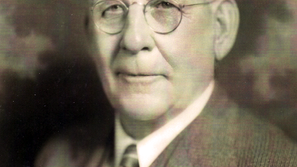World War I
- For The Madera Tribune
- Oct 12, 2022
- 4 min read
Veterans’ Voices is directed toward veterans and their families who have given so much to ensure our freedom in this country. This is an area where you may share your experiences, or read of other veterans’ experiences. We thank you for your service, and hope that you know how much you are loved and appreciated.
What was it like? What was it like in the trenches? What was it like in all those places whose names have faded like Ypres, Gallipoli, Verdun and the Marne?
What was it like to fight the war that was supposed to make the world safe for all of us? There is no one to ask anymore.
The Great War has almost passed from our living memory. The veterans have slipped away, one by one. Their obituaries making the end of the line in country after country.
Eleven years ago, the last U.S. veteran to serve in World War 1 passed away. At the age of 16, he lied about his age to get into the Army and badgered his superiors until they sent him to the French front with an ambulance unit, one of 4.7 million Yanks who answered the call to go “Over There.” He never saw combat but once joked, “Didn’t I make every effort?”
He served in England and France, working mainly as a driver and a warehouse clerk. Later while on business in the Philippines in 1941, he was captured by the Japanese. He spent more than three years in prison camps.
But now, all of them are gone. None of them are alive to tell us about the brutish, bloody conflict that set new standards for horror. No one to answer the question “What was it like?”
Hunkered in a network of fortifications gouged out of a low hill outside the Belgian town of Werwick, the young soldier and his comrades were shielded from shrapnel as the artillery bombardment thundered throughout the evening and into the night. But after four years of trench warfare, both sides had found ways to defeat such defenses. As the rounds thudded into the rich soil of the famed Flanders Fields south of Ypres, the Bis (2-chloroethyl) sulfide liquid hidden in the tips vaporized into the yellowish-brown cloud that earned this new and terrible weapon on its nickname — “mustard gas.” Heavier than the air around it, the gas descended into the trenches and dugouts, enveloping the men in a foul-smelling mist that seeped into the gaps around their shoddily constructed gasmasks.
By midnight, many of the entrenched soldiers were incapacitated as their lungs burned, their eyes swelled shut and deep itches beneath their moldy woolen uniforms erupted into angry red blisters. The 29-year-old courier didn’t feel the effects until the following morning, but then the pain finally arrived, the pain was excruciating.
It all started with the assassination of Austrian Archduke Franz Ferdinand in Sarajevo in 1914 — a tripwire for cataclysm. By the time the Americans entered the war in April 1917, the Europeans had been hammering away at each other for three bloody years. When an ambulance driver arrived at Verdun in the fall of 1917, he discovered a scene of utter desolation.
“We were in historic ground, and it looked it,” a New York City native wrote home to family. “All the hills have been fought over many times and the result is that they are in waves of dirt with one shell hole overlapping the next; no grass or anything growing; no trees but where there used to be a forest, you can see some black spots where the roots remain.”
This was barely a decade after the Wright brothers skimmed over the grass at Kitty Hawk. It isn’t very soothing for the nerves when you hear an engine going right overhead and hear him shut off just before dropping one of his pills.
By the time the Germans agreed to an unconditional surrender in a railway carriage at Compiegne on Nov. 11, 1918, the carnage was almost beyond comprehension. Nearly 20 million civilian and military casualties. More then 116,000 Americans dead, including more than 53,000 killed in combat.
It was a toll so horrifying that the world would spend the next decade devising a treaty to forever “condemn recourse to war for the solution of international controversies and renounce it as an instrument of national policy in their relations with one another.” Many hoped and even dared that H.G. Wells was right — that this would be the war to end all wars. But the seeds of something worse had been sowed. On Nov. 10, 1918, an aged pastor visited a hospital far removed from the front to bring word of the next day’s cease-fire. Among the patients was a young soldier who had been blinded by the gas attack near Ypres a month earlier. When he heard the clergyman’s words, he broke down and wept like a child.
But they were not tears of joy.
That soldier’s name was Adolf Hitler.
Email me at AboutVets@yahoo.com
• • •
— Royal D. Goodman, U.S. Army/Vietnam,
1st Cav/9th Infantry


























Comments